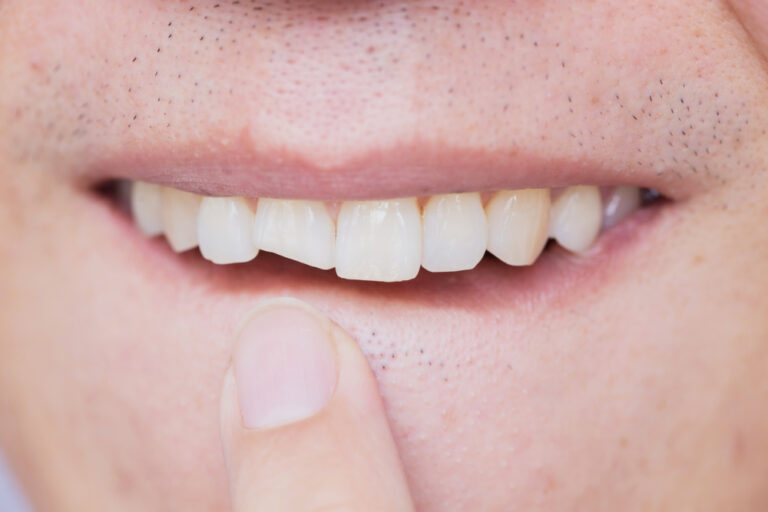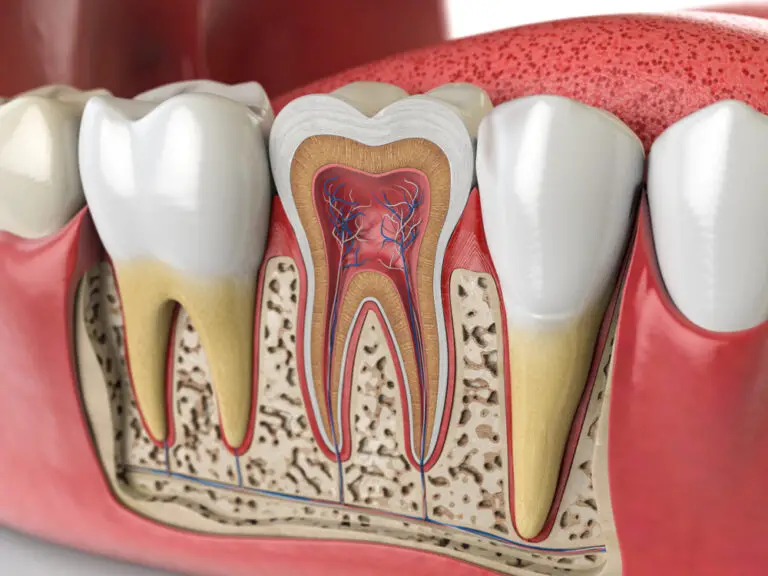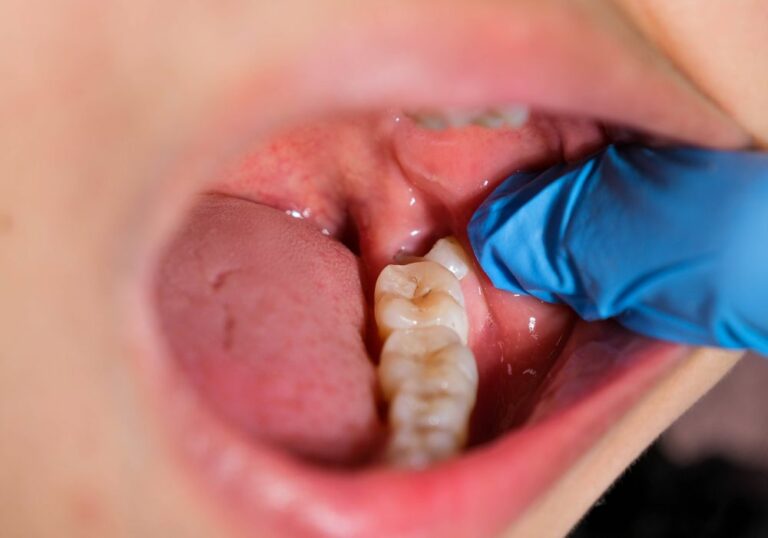Having a gap between your front teeth is very common. In fact, it occurs naturally in about 25% of the population. While some may see it as a unique trait, others are self-conscious about the gap and wish to minimize its appearance. Thankfully, there are several cosmetic options to hide or even close the gap between your teeth. This article will explore the causes of gaps in teeth and review techniques to camouflage them. We will also provide tips on choosing the right solution based on your budget, lifestyle, and personal goals.
What causes gaps in teeth and why are they common?
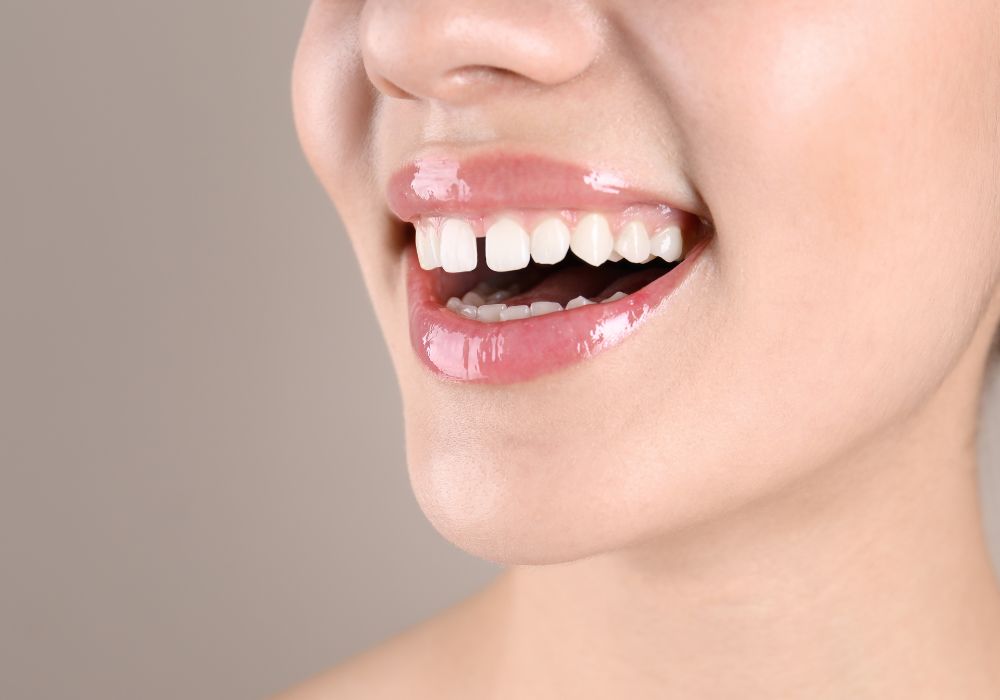
Gaps or spaces between the front teeth are incredibly common, occurring naturally in about 25% of the population. While genetics play a major role, there are other factors that can cause gaps to form or worsen over time:
Genetics
- Diastema is the dental term for extra space between teeth that is caused by genetic inheritance. The amount of room between each tooth is determined before the permanent teeth erupt.
- Certain ethnic backgrounds, such as African Americans and Asians, are more likely to have diastema.
- Diastema has a stronger tendency to run in families and can affect multiple teeth.
Lost teeth
- When a primary baby tooth or permanent adult tooth is lost prematurely, the surrounding teeth can drift or tilt into the empty space over time.
- Common reasons teeth are lost early include severe cavities and decay, trauma or injury, orthodontic extractions to alleviate crowding, and impactions of wisdom teeth.
- The movement of teeth toward an extraction site happens slowly as pressure is lost from the missing tooth. This can create or exaggerate spaces.
Abnormally shaped teeth
- Some people naturally have teeth that are smaller in size or peg-shaped with rounded edges.
- When the front permanent teeth are malformed, it often leaves noticeable gaps surrounding them.
- Genetics frequently play a role in tooth size and shape abnormalities.
High labial frenums
- The labial frenum is a piece of muscle tissue that attaches the inside of the upper lip to the gum just above the front teeth.
- In some cases, this piece of tissue remains overly large or tight as a person grows.
- An abnormally large frenum can put pressure on the teeth and cause gaps between the front teeth.
Periodontal disease
- Periodontal or gum disease results from buildup of plaque bacteria that inflames the gums and bone structure supporting the teeth.
- If left untreated, inflammation can cause receding gums, bone loss, and loosening of teeth.
- As tissue and bone deteriorate, teeth have less support and may slowly drift apart, creating gaps.
Dental treatment options to close or hide gaps
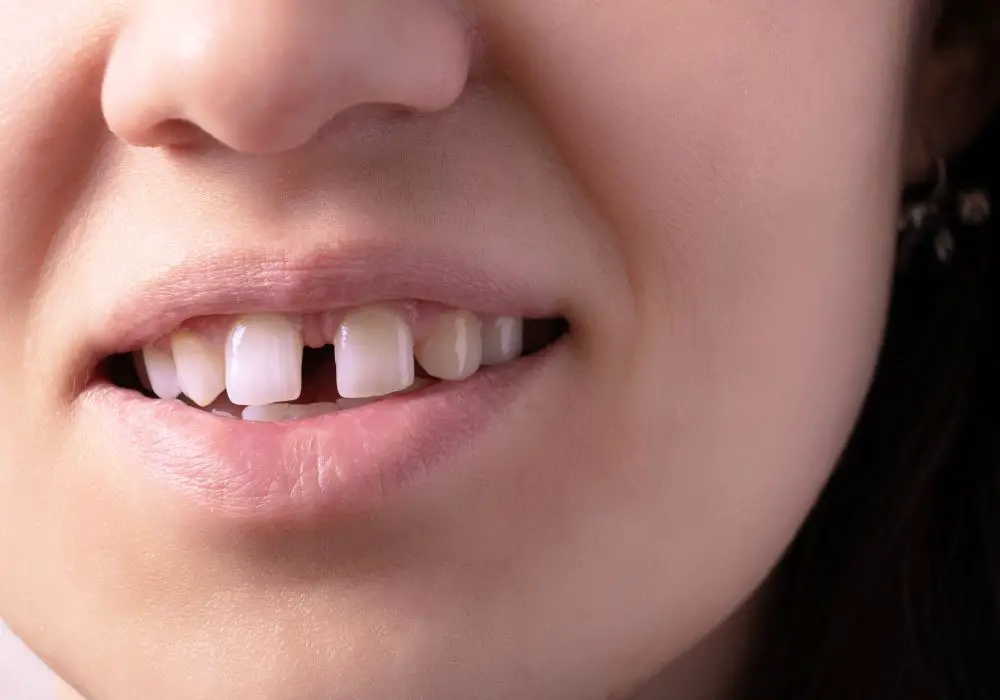
If you are bothered by a gap between your front teeth, there are both non-invasive and invasive dental treatments that can help minimize or close the space:
Cosmetic bonding
- Composite resin material is applied directly to the tooth surface and hardened using a curing light.
- The resin can be shaped and contoured by the dentist to change the size, shape, and position of teeth.
- Bonding is commonly used to cover chips and cracks, but can also hide small gaps by building up the edges of teeth adjacent to the space.
- The process only requires a single dental visit, minimal tooth preparation, and no anesthesia.
- Bonding to hide a gap may cost between $300-$600 per tooth and lasts around 5-10 years before needing replacement.
Porcelain veneers
- Veneers are customized covers made of thin porcelain that adhere directly to the front of teeth.
- The dentist will reshape the teeth so veneers can be placed to lengthen, widen, or change the shape of teeth.
- Veneers are an effective way to completely transform and close larger gaps, providing a natural appearance.
- The teeth must be permanently prepared for placement, so veneers are irreversible. They last approximately 10-15 years with proper care.
- Placing 4-6 veneers to close a gap typically costs $5,000-$15,000 depending on the case.
Orthodontic treatment
- Clear aligners like Invisalign or traditional metal braces can bring teeth together over an average of 12-24 months.
- Orthodontics may be the best option for still-growing teens or young adults that have gaps and other bite issues that require correction.
- Braces apply gentle pressure to normalize the position of teeth, completely closing spaces in the process. It is one of the only ways to permanently address gaps.
- On average, braces cost $3,000-$8,000 with insurance and require diligent use and dental visits during treatment.
Dental implants
- When the gap is caused by a missing tooth, a dental implant fused to the jawbone can fill the space.
- The titanium implant root replaces the missing tooth root and never shifts over time like a bridge or denture.
- An artificial porcelain crown is fitted to the implant post to seamlessly fill the gap.
- Implants may cost $3,000-$4,500 per tooth but are the most functional, lifelike solution.
Non-invasive, temporary options
If you want to quickly and affordably disguise a gap for a short period of time, consider these approaches:
Tooth-colored fillings
- Composite resin fillings can be precisely placed within the gap itself to physically fill the space.
- While not a permanent fix, fillings offer an inexpensive option to hide small-to-moderate gaps between cleanings or orthodontic treatment.
- Fillings range from $150-$250 per tooth and can last 1-5 years before needing replacement.
Dental wax
- Beeswax strips can be molded to the contours of teeth and placed over the gap.
- The wax is held in place as needed before photos or special events to create the illusion of fullness between teeth.
- Dental wax is available at drug stores for $10 or less and results last a few hours. Reapplication is needed.
Caulk or putty
- While not made specifically for dental use, some use acrylic caulk or moldable putty to temporarily fill their gaps.
- These materials can be molded and stuck in place for several hours but should be removed and replaced daily.
- Use dental-grade, non-toxic products only and avoid this risky approach. Effects are extremely temporary.
Orthodontic rubber bands
- Tiny rubber bands or orthodontic elastic bands can be stretched between teeth with gaps to bring them closer together.
- This technique provides mild pressure on the teeth to minimize the gap for a few hours at a time.
- Orthodontic elastics are available inexpensively online or can be provided by your orthodontist.
Teeth whitening
- A brighter, whiter smile can help minimize the appearance of gaps and other blemishes.
- Professional whitening is recommended 1-2 weeks before an event for the most dramatic results.
- Over-the-counter kits save money but may require 2-3 week’s consistent use to see results.
- Whitening costs range from $100-$600 depending on the type and location of the procedure.
Cosmetic teeth primers
- Primers are opaque resins applied in thin coats to even out the color and shape of teeth before photos.
- Many primers contain fine particles that can slightly build up and fill in gaps between teeth.
- Results are extremely temporary – just lasting until primers wash or wear away. Reapplication is required.
- Primers cost around $20-$35 and are sold at beauty retailers and online shops.
Tips for choosing the ideal gap solution

When evaluating the options to hide or close spaces between teeth, keep these factors in mind:
- What is your budget for gap closure treatment? Find out what insurance covers and expected out-of-pocket expenses. Cosmetic options are rarely covered.
- Do you need an instant, temporary fix or a permanent solution? Some options work immediately while others require weeks or months of use.
- What are your personal goals? Do you want to improve dental function or aesthetics? This can help determine how invasive of a treatment is ideal.
- Consider your dental health history. Issues like gum disease may need to be addressed before cosmetic treatments.
- Will your lifestyle impact certain choices like bonding which can break with mouthguards, biting nails, or playing instruments?
- Research the longevity of each technique. Cosmetic treatments often need replacing or touching up years later.
- Evaluate pros and cons of various materials used like porcelain, composite resin, acrylics, and metals.
- Look at before and after photos to envision potential changes in tooth shape, size, and color from different procedures.
- Get professional advice from your dentist or orthodontist on options tailored to your specific gap and needs.
Frequently Asked Questions
How much do veneers typically cost to close the gap between front teeth?
On average, porcelain veneers cost $925 to $2,500 per tooth. Treating several teeth with veneers to completely close a gap could cost between $5,000 to $15,000 based on the case and location.
Can clear Invisalign aligners close moderate to large gaps between teeth?
Yes, Invisalign is able to incrementally move teeth together over months of use, closing gaps of various sizes from small diastemas to large spaces between teeth. On average, Invisalign treatment takes 12-18 months and costs $3,000-$8,000.
Is having a small gap between front teeth considered normal, or should I automatically treat it?
Minor gaps between teeth are genetically normal variations, present in about 25% of the population. There is no need to treat the gap for health reasons. Aesthetic closure is optional and based on personal preference.
What are my options to hide a gap without traditional metal braces?
Depending on the size of the space, there are several ways to disguise or minimize gaps without metal braces, including clear aligners, veneers, bonding, fillings, dental implants, teeth whitening, and non-invasive cosmetic techniques.
How can I temporarily make my gap less noticeable for an event or photos in the next week?
Quick, temporary options to hide gaps include dental wax, caulk, orthodontic elastics, teeth whitening, bonding strips, composite fillings, and cosmetic tooth primers. These provide non-permanent, fast disguise of gaps for weddings, parties, photoshoots, and other events.

